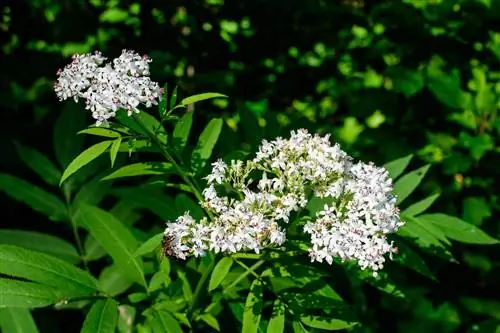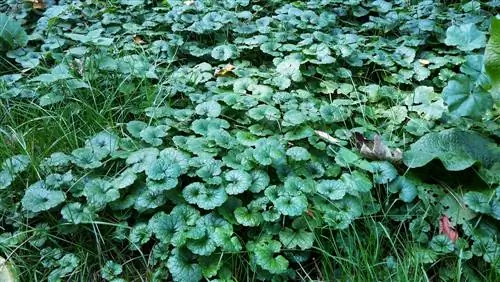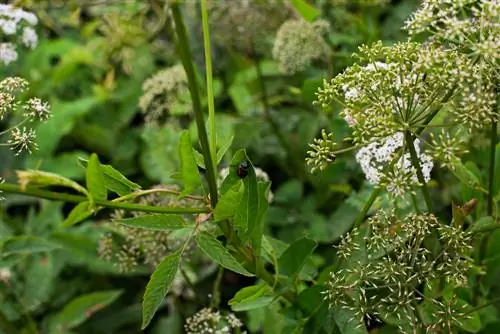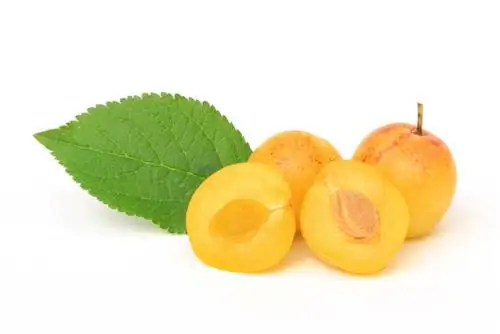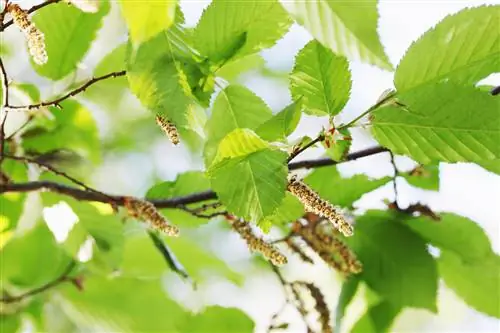- Author admin [email protected].
- Public 2023-12-25 17:45.
- Last modified 2025-01-23 11:22.
The real valerian is not only known as cat's herb, the rhizomes are also often used as a calming home remedy. Cultivation is not difficult. However, when collecting in nature, you should be well versed, because some plants have a certain similarity.
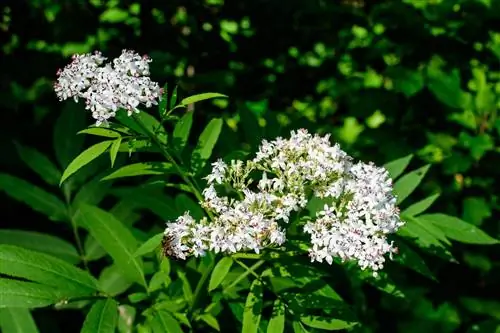
What is real valerian easily confused with?
Plants similar to real valerian are not as rare as you might think. It can not only be confused with other species of valerian, but also with some (very) poisonous plants such as dog parsley, parakeet or some species of hemlock.
Is valerian easily confused with other plants?
Yes, real valerian (bot. Valeriana officinalis) can definitelybe confused with other plants. First and foremost, other types of valerian should be mentioned here. Young plants, for example, resemble small valerian. However, this is not a problem because no species is said to be poisonous. Dwarf elderberry (bot. Sambucus ebulus), spotted hemlock (bot. Conium maculatum) and water hemlock (bot. Cicuta virosa) can also be confused with valerian become. There is also a distant similarity to dog parsley (bot. Aethusa cynapium). All of these plants are considered more or less poisonous.
How do I recognize real valerian?
True valerian can be easily recognizedby its lush green leaves. A leaf about 20 centimeters long consists of up to 23 egg-shaped, lanceolate leaflets that are arranged oppositely. Similar plants often have slightly different leaf shapes or colors. Also pay attention to the location of the plant. Valerian likes to grow in (moist) meadows and on the edge of streams or ponds.
Does valerian have a poisonous “double”?
TheDwarf Elderberry, also known as Attich, could be described as a poisonous “double.” The risk of confusion is quite high here due to the similar leaf structure and growth habit. However, the dwarf elderberry prefers to grow on wasteland and at higher altitudes.
Tip
Details worth knowing about real valerian
The real valerian is native to large parts of Europe. It can grow up to two meters high. During the flowering period from May to June, the numerous delicate flowers exude an intense, sweet scent. This attracts butterflies and insects, which is why valerian should not be missing from any bee-friendly garden. However, it also attracts “loving” tomcats.

